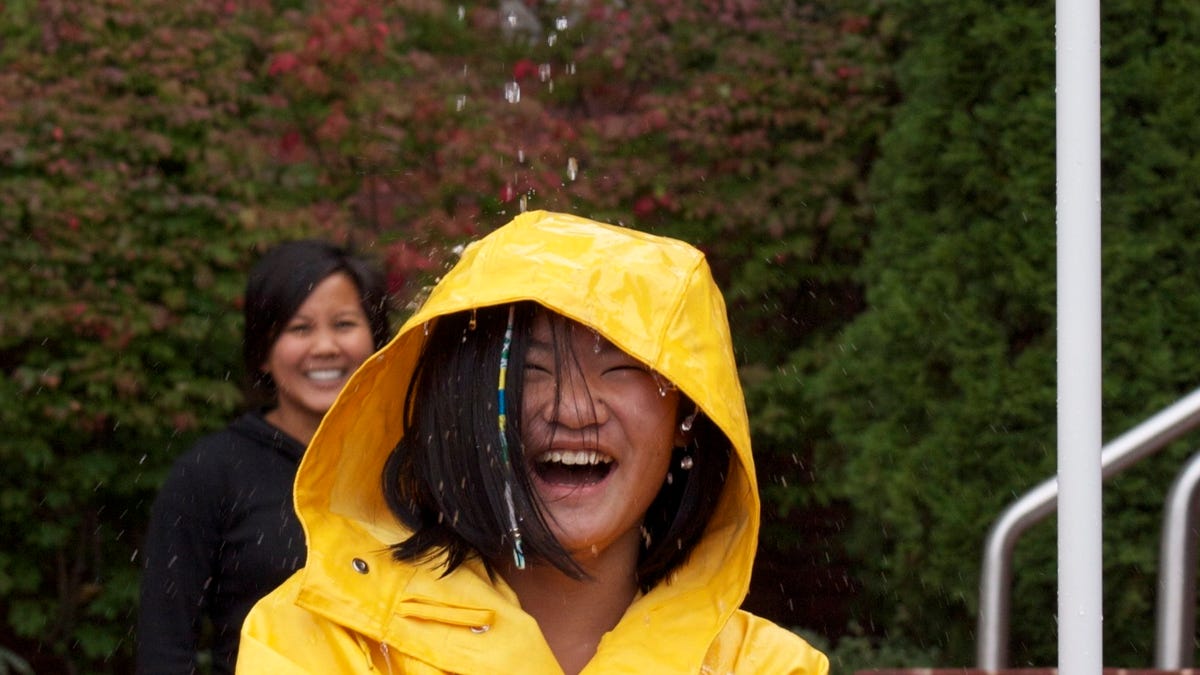Get him back (and go green) with Sibling Soaker
PBS series "Design Squad" challenged kids 5 to 19 to create the next great green invention, with winning innovations built by a global design firm. Watch out, Dean Kamen!
Ever get the urge to douse your annoying sibling/pal/boyfriend/girlfriend/neighbor/stalker with water (you know, to teach 'em a lesson)? A crafty 12-year-old inventor from Ava, N.Y., has just made public-revenge drenchings a lot easier to pull off than they used to be.
Lilly Bulawa, one of three winners of a green-design contest sponsored by the PBS competition series "Design Squad," created the "Sibling Soaker," a homemade dunk tank fashioned from common household items. After seeing a dunking booth in action at a fair, she decided that she wanted one for backyard parties.
"I made a target out of an old kitchen grease screen that pivots and swings an arm with a pin attached. This pin hits a water balloon hanging off a clothes pin," she said. "Throw, hit target, break water balloon, douse annoying sisters!!"
Now, as a winner of the 2010 Trash to Treasure competition, Bulawa has netted the sort of prize even the most seasoned inventor dreams of: she was flown to Boston to watch her innovation bring built by Continuum, a global design consultancy (watch the video below).
Trash to Treasure challenged kids ages 5 to 19 to recycle, reuse, and re-engineer everyday materials to create the next great green invention.
The device had to fit into one of the three categories: mobility, environmental protection, or play. Lilly's Sibling Soaker, which clearly falls into the latter category (if you're the one doing the dunking), might not seem so green on the surface, but think about how much water it saves, compared with the traditional dunking machines used to keep school principals humble.
Also concerned with saving water is Lilly's 14-year-old sister, MaryAnn Bulawa. No doubt fresh off being hit by a water balloon in the family backyard, she came up with another grand-prize-winning invention, the "Smarter Toilet," which lets users decide how much water they need to flush.
A bottle at the end of a plunger acts like a removable brick, and a trigger mechanism lets the bottle float up, if a more powerful flush is needed. To further conserve water, rain is directed into the tank, so less fresh water is needed. "My invention will save millions of gallons of water. More then 40 percent of daily water requirements are used by toilets," said the older Bulawa sis, whose Smarter Toilet was also honored at the White House on Monday, as part of President Obama's Science Fair.
Contest rules stipulated that inventions needed to be made of at least two repurposed materials (fabric, paper, plastic, electronics, wheels, clamps, springs, batteries, wood, string, rubber bands, cardboard, etc.)
Another of the top three winners, 14-year-old Daniel Kim of Franklin Lakes, N.J., created the "MiBike," turning an old bicycle into a tricked-out kids' commuter vehicle with side mirrors, a roof to block rain and snow, and a storage compartment for books, pencils, and backpacks.
Runner-up inventions (watch out, Dean Kamen!) included the "Heli-Rocket," which sends a toy rocket skyward with an old 2-liter bottle, tubing, and air compression (you stomp on the bottle, and it shoots the rocket up); the Puck Passer, which uses PVC piping and an old bin to collect a hockey puck; and skates made of materials including magnets, plastic, and floss.
This year marks the second Trash to Treasure contest. Last year's winner, Max Wallack, 13, invented the "Home Dome," a temporary shelter for homeless people and disaster victims.


